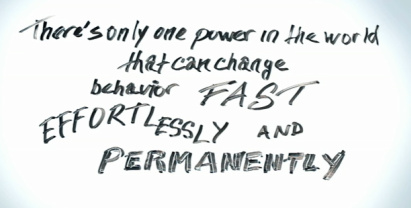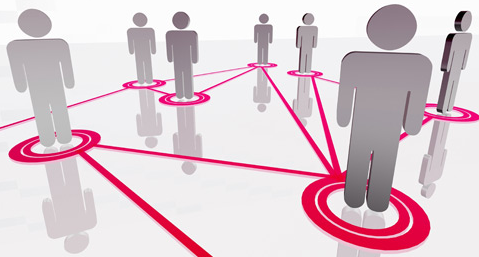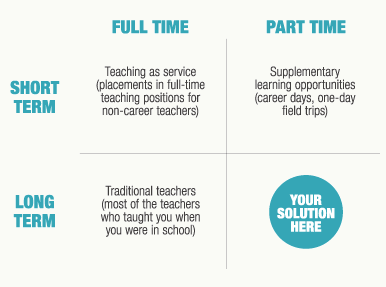August 13th, 2011
 Achieving lasting behavior change when it comes to the way we eat, get physical activity, use drugs (prescribed or not), manage stress and deal with the chronic health conditions we may have is a major social and economic priority in the US. As traditional approaches have failed, innovative behavior change services are emerging. Many are based on good cognitive design.
Achieving lasting behavior change when it comes to the way we eat, get physical activity, use drugs (prescribed or not), manage stress and deal with the chronic health conditions we may have is a major social and economic priority in the US. As traditional approaches have failed, innovative behavior change services are emerging. Many are based on good cognitive design.
Take for example, Keas. They have built an employee wellness program around a social game that uses direct incentives, positive reinforcement, team competition and friendly but real peer pressure to drive health behavior change. Importantly, they avoid lecturing and negative reinforcement. Check out this short two minute video on the psychology behind Keas.
Clearly it is designed for how our hearts-and-minds really work. No super science and no special diet. Keas demonstrates that we already have the understanding we need to make behavior change. What is lacking are the designs and innovations that translate that understanding into outcome producing practices, products and services.
Interested to hear from readers about other service innovations that reflect good cognitive design and deliver behavior changes. One reader suggested this post on 11 wellness platforms from the Mobile Health News Blog.

Posted in Behavior Change, Service Innovation | No Comments »
August 10th, 2011

Source of Image: Nudge

Posted in Examples | 9 Comments »
August 7th, 2011

On-line enrollment ends September 20.
I am often asked by students interested in cognitive design about the best classes to take. I always recommend at least one class in artificial intelligence (AI). An introduction to AI is necessary to make good decisions about the role of smart artifacts and machine intelligence on any cognitive design project. Once a niche, smart artifacts and various degrees of sophistication are appearing everywhere.
Starting this Fall (10 weeks from Oct 10 to Dec 26), you will be able to take a top-flight introductory class in AI from Stanford for free. It is the full version of the course including graded assignments and exams and the ability to ask questions as if you were a Stanford student. If you pass you will receive a letter of completion that includes your rank. More importantly, you will gain insight into the workings and limitations of of machine intelligence.
The class does assume an understanding of probability and linear algebra. It will take about 10-15 hours of effort a week. If you don’t know AI and are serious about cognitive design, I suggest you complete this course.

Posted in Events, Related Fields | No Comments »
August 5th, 2011
 There is no doubt that the interactive video game is one of the most successful cognitive designs of all times. We have a general idea of what makes a good interactive game design tick but don’t understand them well enough to consistently reproduce the effects, especially in areas outside of pure entertainment such as education and health. That is why I am always on the look out for new scientific studies on the video game design pattern.
There is no doubt that the interactive video game is one of the most successful cognitive designs of all times. We have a general idea of what makes a good interactive game design tick but don’t understand them well enough to consistently reproduce the effects, especially in areas outside of pure entertainment such as education and health. That is why I am always on the look out for new scientific studies on the video game design pattern.
Take for example, the recent research announced by the Association of Psychological Science, Getting to the Heart of the Appeal of Videogames. This research studied almost 1000 serious gamers and hundreds of casual gamers. An impressive scope relative to other video game studies.
What they found was that the allure of the game was not the ability to “escape from the world” as is often argued but the ability to try on different characters that you would ideally like to be.
More specifically:
“The research found that giving players the chance to adopt a new identity during the game and acting through that new identity – be it a different gender, hero, villain – made them feel better about themselves and less negative.”
The new identity has the greatest impact when it represents the ideal you but still overlaps with some characteristics you currently have.

This has important implications for cognitive designers. There are many ways to incorporate “trying on the ideal you” in other designs.

Posted in Examples | No Comments »
August 1st, 2011
 Adding a specific think-and-feel experience to a product for customers or an internal service for employees is one way to use cognitive design to differentiate an offering. You provide the same core functionality as a competitor but you differentiate by delivering it in a way that meets a deeply felt psychological need. For example, a product or service that makes a donation to a worthy cause when purchased. That delivers a small but potent “feel-good” by doing good experience for the shopper.
Adding a specific think-and-feel experience to a product for customers or an internal service for employees is one way to use cognitive design to differentiate an offering. You provide the same core functionality as a competitor but you differentiate by delivering it in a way that meets a deeply felt psychological need. For example, a product or service that makes a donation to a worthy cause when purchased. That delivers a small but potent “feel-good” by doing good experience for the shopper.
According to The Integer Group, how you make the donation can have a big impact. In a recent research study they found:
“When choosing between two brands that benefit a cause, 43 percent of women say they choose the brand that donates with every purchase over a brand that donates a set amount.”
They also found that causes with an emotional message devoted to disease prevention generated a more intense feel-good for women.
These psychographic findings have clear implications for cognitive designers working in product and service innovation.

Posted in Psychographics, Service Innovation | No Comments »
July 29th, 2011
 Androids or human like robots are growing in numbers. We see them in video games and films as well as in the real-world as service bots. Some androids gives us the creeps others we like. A brain scanning study just reported from UC San Diego, Your Brain on Androids, helps to explain this difference. It turns out that androids that look too human but don’t also move in a perfectly human way, give us the creeps. On the other hand, androids that move more like robots and look more like robots are fine.
Androids or human like robots are growing in numbers. We see them in video games and films as well as in the real-world as service bots. Some androids gives us the creeps others we like. A brain scanning study just reported from UC San Diego, Your Brain on Androids, helps to explain this difference. It turns out that androids that look too human but don’t also move in a perfectly human way, give us the creeps. On the other hand, androids that move more like robots and look more like robots are fine.
Our brains expect a match between the level of human-like appearance and motion
Not a surprise to readers of the cognitive design blog. If it looks human but moves robot we have colliding mental models and cognitive dissonance. If the visual differences are subtle and we cannot put our finder on the source of cognitive dissonance it could get creepy. The importance of the UC San Diego study is that they saw this in our neural hardware and were able to study the range of the effect. The finding are summarized in terms of the “uncanny valley effect” when our feelings about an android suddenly go negative because it looks too human.
From a cognitive design perspective, this finding about the mismatch between appearance and motion could generalize across artifacts to produce opportunities for innovation. For example, looks like a car but does not move like a car. The challenge is to find a way to leverage it to produce interest or positive mental energy. In this example, a human doing a robot dance has nearly 6 million view.
Source of Image: UC San Diego news release.

Posted in Psychographics, Related Fields | No Comments »
July 26th, 2011

One of the big findings in the last 20 years about how minds work has to do with memory. Memory is far from an objective record of things. Memory is dynamic and its contents are shaped and recreated by expectations, cognitive biases and social pressure. These memory distortion factors are so powerful that not only do they change content they can spawn false memories that are stronger than the original. A good example was recently documented by researchers exploring how social influence creates false memories.
What they found in a nutshell is that 70% of the time we will change our memory of an event, even one we are confident of, if presented with opposing points of view from other members that participated in the event. The social nature of the opposing point of view is reinforced with social-media style photos. What is shocking is that almost 50% of time when we are told that the opposing view was just a spoof (not true), we still don’t revert to the original memory.
What others think can play a dominate role in the formation and recall of memory. This has strong implications for cognitive designers working in the areas of decision-making and education.

Posted in Cognitive Bias, Memory | No Comments »
July 24th, 2011
 Learning & the Brain is hosting another fantastic conference that examines how the latest findings neuroscience and psychology can be applied to education. Scheduled for November in Boston, Preparing 21st Century Minds will cover: Cognitive Training and Technology; Instructing Innovation and Imagination; Critical Thinking and Reflection; Connecting Culture, Collaboration and Moral; and Leveraging the Strengths and Talents of Special Minds.
Learning & the Brain is hosting another fantastic conference that examines how the latest findings neuroscience and psychology can be applied to education. Scheduled for November in Boston, Preparing 21st Century Minds will cover: Cognitive Training and Technology; Instructing Innovation and Imagination; Critical Thinking and Reflection; Connecting Culture, Collaboration and Moral; and Leveraging the Strengths and Talents of Special Minds.
The conference includes several workshops and a tour of MIT’s brain scanning facility. If you have work to share, proposal for poster sessions are open until October 15, 2011.
Source of Image: 21st Century Digital Learner

Posted in Events | 3 Comments »
July 22nd, 2011
Many things can keep us from reaching our goals including ourselves. Indeed, our ability to regulate our thoughts, feelings and reactions to the challenges we encounter when working towards goals strongly determines success. My ability to self regulate shapes for example, how I deal with frustration or the impulse to do something more enjoyable; if I take risks to learn new things; and ultimately whether I give up or keep going.
Cognitive designers focused on creating programs to help people achieve lasting behavior change or reach other goals must pay special attention to the psychology of self regulation.
 That is why I am always on the lookout for studies that take a scientific look at how well the various tactics for self regulation work. For example, consider the study just published on the Self-Regulation of Priming Effects on Behavior. In this study researchers completed three experiments to see if implementation intentions or the formulation of if-then plans improved self regulation. They found that they worked!
That is why I am always on the lookout for studies that take a scientific look at how well the various tactics for self regulation work. For example, consider the study just published on the Self-Regulation of Priming Effects on Behavior. In this study researchers completed three experiments to see if implementation intentions or the formulation of if-then plans improved self regulation. They found that they worked!
An if-then plan involves imagining potential defeaters to your intent on reaching a goal and then making a plan to avoid or counteract its effects, if the defeater happens to surface. For instances, if my goal is to lose weight and I know I have trouble resisting cookies, I might make a plan that says “if I encounter a cookie then I will chew a piece of gum”. Although simplistic, it is our ability to learn which types of if-then plans work that determines how well we learn new behaviors from experience.

Posted in Behavior Change | No Comments »
July 20th, 2011
Deadline for submission is August 3, 2011 by 5pm EDT
STEM or science, technology, engineering and mathematics is a big driver of innovation and economic progress in the US. Providing high-quality public education in STEM is therefore vital to growing the US economy. Our global rankings in STEM education have been slipping and elective enrollment in STEM areas has been falling. The old model of STEM fails to meet the psychological needs and demands of 21st century students in the US.
Teaching and learning STEM involves all dimensions of our minds – intellectual, emotional, motivational and volitional and therefore retooling it is a major cognitive design challenge. Making real progress in public STEM education requires designing new learning processes optimized for how the minds of US students really work.
One approach to improve STEM education is to more deeply involve professionals, companies and other community resources with STEM expertise in the learning process. To help bring focus to this approach, Changemakers working with the Carnegie Corporation and The Opportunity Equation has launched a STEM competition around the theme:
“Partnering for Excellence: Innovations in Science + Technology + Engineering + Math Education, an online collaborative competition, will spur creative ways for companies, universities, and other organizations with expertise in the STEM fields to partner with the public schools that need their talent. We are looking for models that bring STEM expertise into public schools, thereby using resources from the private and not-for-profit sectors in new ways to further student learning designed with a “long term, part time” approach (see visual below)”

As of this post there are a 101 entries. The deadline for submission is 5pm ET on August 3rd. While there are several cash prizes to win, the real value might be in the community-based feedback you received on your proposal.

Posted in Events, Related Fields, Service Innovation, Uncategorized | 15 Comments »
 Achieving lasting behavior change when it comes to the way we eat, get physical activity, use drugs (prescribed or not), manage stress and deal with the chronic health conditions we may have is a major social and economic priority in the US. As traditional approaches have failed, innovative behavior change services are emerging. Many are based on good cognitive design.
Achieving lasting behavior change when it comes to the way we eat, get physical activity, use drugs (prescribed or not), manage stress and deal with the chronic health conditions we may have is a major social and economic priority in the US. As traditional approaches have failed, innovative behavior change services are emerging. Many are based on good cognitive design.








